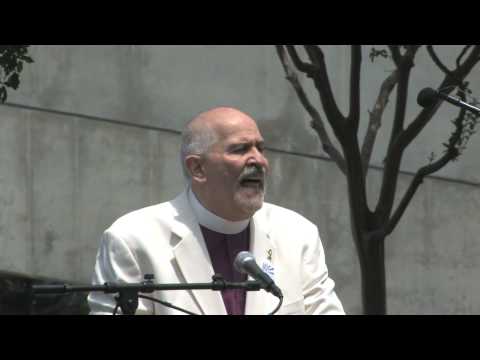|
Gay Wisdom for Daily Living brought to you by White Crane Institute ͏ ͏ ͏ ͏ ͏ ͏ ͏ ͏ ͏ ͏ ͏ ͏ ͏ ͏ ͏ ͏ ͏ ͏ ͏ ͏ ͏ ͏ ͏ ͏ ͏ ͏ ͏ ͏ ͏ ͏ ͏ ͏ ͏ ͏ ͏ ͏ ͏ ͏ ͏ ͏ ͏ ͏ ͏ ͏ ͏ ͏ ͏ ͏ ͏ ͏ ͏ ͏ ͏ ͏ ͏ ͏ ͏ ͏ ͏ ͏ ͏ ͏ ͏ ͏ ͏ ͏ ͏ ͏ ͏ ͏ ͏ ͏ ͏ ͏ ͏ ͏ ͏ ͏ ͏ ͏ ͏ ͏ ͏ ͏ ͏ ͏ ͏ ͏ ͏ ͏ ͏ ͏ ͏ ͏ ͏ ͏ ͏ ͏ ͏ ͏ ͏ ͏ ͏ ͏ ͏ ͏ ͏ ͏ ͏ ͏ ͏ ͏ ͏ ͏ ͏ ͏ ͏ ͏ ͏ ͏ ͏ ͏ ͏ ͏ ͏ ͏ ͏ ͏ ͏ ͏ ͏ ͏ ͏
|
|
||||
| This Day in Gay History | ||||
July 27Born 1940 - THE REVEREND TROY PERRY, American minister and activist, born; founded the Metropolitan Community Church, a Christian denomination with a special affirming ministry with the LGBT communities, in Los Angeles on October 6, 1968. In 1968, after a suicide attempt following a failed love affair, and witnessing a close friend being arrested by the police in a Gay bar, Perry felt called to return to his faith and to offer a place for Gay people to worship God freely. Perry put an advertisement in The Advocate announcing a worship service designed for Gays in Los Angeles. Twelve people turned up on October 6, 1968 for the first service, and "Nine were my friends who came to console me and to laugh, and three came as a result of the ad." After six weeks of services in his living room, the congregation shifted to a womans' club, an auditorium, a church, and a theater that could hold 600 within several months. In 1971, their own church was dedicated with over a thousand members in attendance. Rev. Perry's activism has taken many turns, including positions on a number of boards of Gay, Lesbian, bisexual, and transgendered organizations. He held a seat on the L.A. County Commission on Human Rights in 1973. Perry worked in political arenas to oppose Anita Bryant in the Save the Children campaign in 1977, that sought to overturn an anti-discrimination ordinance passed by the city of Miami. Unsuccessful in Miami, he also worked to oppose the Briggs Initiative (No On 6) in California that was written to ensure Gay and Lesbian teachers would be fired or prohibited from working in California public schools. The Briggs Initiative was soundly defeated in 1978, due in large part to grass roots organizing, which Perry participated in. Perry also planned the National March on Washington for Lesbian and Gay Rights in 1979 with Robin Tyler. Rev. Perry was invited to the White House in 1977 by President Jimmy Carter to discuss Gay and Lesbian civil rights, and by President Bill Clinton in 1995 for the first White House Conference on HIV/AIDS. In 1997 he was invited to the first White House Conference on Hate Crimes. He retired as Moderator of the MCC in 2005, and the Reverend Elder Nancy Wilson succeeded him at an installation service in 2005. He remains active in public speaking and writing. Noteworthy 1940 - The animated short "A Wild Hare" is released, introducing the character of BUGS BUNNY. Bug went on to demonstrate a definite talent for cross dressing. Bugs Bunny has some similarities to figures from mythology and folklore, such as Bre’r Rabbit, Nanabozho, or Anansi, and might be seen as a modern trickster (repeatedly using cross-dressing mischievously). Unlike most cartoon characters, however, Bugs Bunny is rarely defeated in his own games of trickery. 2017 - NATIONAL SLEEPY HEAD DAY is celebrated in Finland. Traditionally on this day, the last person in the house (also dubbed as the 'laziest') to wake up is woken up using water, either by being thrown into a lake or the sea, or by having water thrown on them. It is based on the story of the Saints of Ephesus who slept in a cave for some 200 years during the Middle Ages whilst hiding from persecution by the Roman Emperor at the time. Today's Gay Wisdom 2017 - TODAY’S GAY WISDOM In the following list of cartoons, Bugs appears in some form of ladies garb or does a female-like turn: Hare-um Scare-um (Hardaway/Dalton, 1939) Elmer’s Pet Rabbit (Jones, 1941) The Heckling Hare (Avery, 1941) The Wabbit Who Came to Supper (Freleng, 1942) Bugs Bunny Gets the Boid (Clampett, 1942) Super-Rabbit (Jones, 1943) A Corny Concerto (Clampett, 1943) What’s Cookin’ Doc? (Clampett, 1944) Bugs Bunny Nips the Nips (Freleng, 1944) Hare Ribbin’ (Clampett, 1944) Stage Door Cartoon (Freleng, 1945) One of the can-can dancers Fudd whistles at. Herr Meets Hare (Freleng, 1945) Hare Conditioned (Jones, 1945) Hare Trigger (Freleng, 1945) Hair-Raising Hare (Jones, 1946) Easter Yeggs (McKimson, 1947) Mississippi Hare (Jones, 1948) Haredevil Hare (Jones, 1948) Hare Splitter (Freleng, 1948) Bowery Bugs (Davis, 1949) Long-Haired Hare (Jones, 1949) Frigid Hare (Jones, 1949) Rabbit of Seville (Jones, 1949) The Windblown Hare (McKimson, 1949) What’s Up Doc? (McKimson, 1950) Hillbilly Hare (McKimson, 1950) Rabbit Fire (Jones, 1951) Water, Water, Every Hare (Jones, 1952) Rabbit Seasoning (Jones, 1952) Southern Fried Rabbit (Freleng, 1952) Hare Trimmed (Freleng, 1953) Robot Rabbit (Freleng, 1953) Rabbit Rampage (Jones, 1955) Napoleon Bunny-part (Freleng, 1956) To Hare is Human (Jones, 1956) What’s Opera, Doc? (Jones, 1957) Bedevilled Rabbit (McKimson, 1957) Now, Hare This (McKimson, 1958) Hare-abian Nights (Harris, 1959) Backwoods Bunny (McKimson, 1959) The Unmentionables (Freleng, 1963) Bill of Hare (McKimson, 1962) Dr. Devil and Mr. Hare (McKimson, 1964) Carrotblanca (Cahill/McNally, 1995) From Hare To Eternity (Jones/Clough, 1996) Eh..tha—th-th-th-th-th-th-That’s All Folks! | ||||
|
/|=/|=/|=/|=/|=/|=/|=/|=/| Community Notices |/=|/=|/=|/=|/=|/=|/=|/=|/
IT'S TIME TO PUT YOUR MONEY WHERE YOUR HISTORY IS… "The White Crane Institute and its numerous projects like White Crane Journal, Daily GayWisdom: This Day In Gay History and White Crane Books have provided for me an amazing centering experience about what it means to be a part of the gay tribe in these trying times, when my very existence and depth have been reduced by the commercialized "gay world" to just another "consumer choice." White Crane is about the genuine fullness of us, in an increasingly bland and corporatized daily environment. It is about our often secret, and incredibly beautiful past and the real excitement of our future. We need to support WCI the way we support other vital resources in our lives, and keep it going, growing, and alive. I can't see any other way to live." ~ Perry Brass, author of How to Survive Your Own Gay Life , The Manly Art of Seduction, King of Angels, and many other books. Support White Crane Institute White Crane Institute is regularly in need of financial assistance. Our operating needs are relatively small, but they are persistent. Web maintenance costs, electricity, phones, postage. The crash of the only computer that enables this work to happen was an expensive proposition to retrieve and replace. We are now able to bring Arthur Evans’ landmark Witchcraft and the Gay Counterculture to print again, with the addition of his follow-up to that work, Moon Lady Rising. Therefore, in the spirit of asking for what we need, we are, again, asking that you consider making a contribution now. $20.00, $50.00, $100, or $1000…every donation helps. We continue to not look to advertising money because we respect Gay men as something more than a mere marketing niche. We need a little from you. And as always it is tax deductible. We're a 501(c)3) educational corporation. Many of you have been consistently generous and we thank you. For White Crane Institute, for Daily GayWisdom and for White Crane Books your support is essential. Give online by clicking on the link below: We also accept checks: White Crane Institute Thank you in advance for your support! |8|O|8|O|8|O|8|O|8|O|8|O|8|O|8| Gay Wisdom for Daily Living from White Crane Institute "With the increasing commodification of gay news, views, and culture by powerful corporate interests, having a strong independent voice in our community is all the more important. White Crane is one of the last brave standouts in this bland new world... a triumph over the looming mediocrity of the mainstream Gay world." - Mark Thompson Exploring Gay Wisdom & Culture since 1989! |8|O|8|O|8|O|8|O|8|O|8|O|8|O|8| | ||||
|
|||||
|




